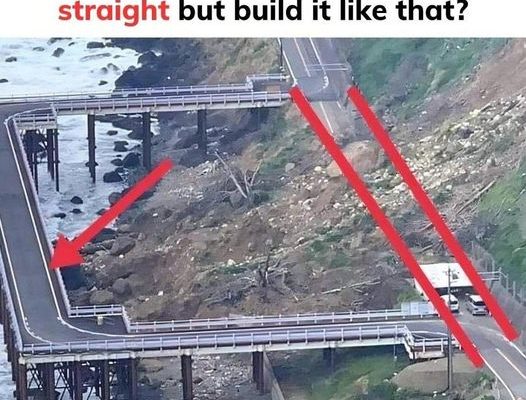When you come across a bridge that doesn’t follow a straight path, you might wonder why engineers chose a curved or angled design instead. Wouldn’t a straight bridge be simpler and more efficient? It turns out, bridge design is far from random; there are compelling reasons why some bridges veer off the straight path. Let’s dive into why engineers build bridges with curves and how these designs protect against natural forces, such as landslides.
The Importance of Bridge Design: More Than Just Aesthetics

At first glance, a curved bridge might seem like an architectural choice to make it more visually appealing. While aesthetics are sometimes a factor, the primary reasons are rooted in practicality and safety. Engineers consider various elements, such as the landscape, environmental threats, and structural integrity. In many cases, a curved or angled bridge can provide enhanced durability, reduced environmental impact, and greater resilience against natural forces.
One significant reason for curved bridge designs? Landslide prevention. But how does a bridge’s shape relate to landslides, and why would engineers avoid a straight path when constructing a bridge? Let’s break it down.
How Landslides Influence Bridge Design
Landslides are a natural hazard that can cause devastating damage to infrastructure. In regions prone to landslides, straight bridge designs may not be the safest option. A landslide can exert massive forces on a bridge, and if it impacts the structure at the wrong angle, it could lead to catastrophic failures.
By incorporating curves or angles, engineers can design bridges that are better equipped to handle or avoid the impact of landslides. Curved bridges allow for the following benefits in landslide-prone areas:
- Redirecting Force: A curved bridge can help redirect the force of a landslide away from the structure. Instead of the force hitting a straight line and potentially causing a collapse, a curve can help the energy disperse, minimizing the impact on the bridge.
- Avoiding Unstable Ground: Straight bridges may cross over areas that are highly susceptible to landslides. By curving the bridge, engineers can direct it around these hazardous areas, placing the structure on more stable ground and reducing the risk of landslide damage.
- Better Weight Distribution: Curved bridges can spread the load across multiple points, helping the bridge withstand any sudden forces from a landslide. This design feature enhances stability and reduces the strain on any single point of the structure.



